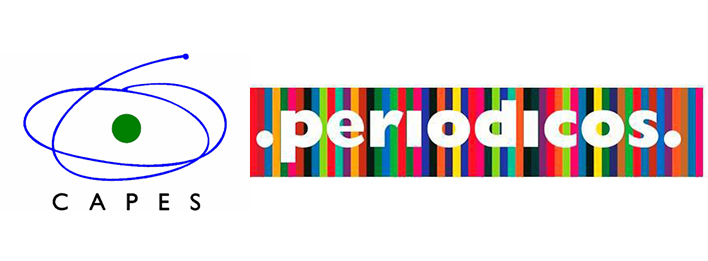Foraging Activity of Xylocopa cearensis (Ducke) in Sand Dune Landscape
DOI:
https://doi.org/10.13102/sociobiology.v66i1.3446Keywords:
Bee conservation – Flight distance – Translocation experiment – functional connectivityAbstract
Bees foraging strategy is affected by the distribution and abundance of flower resources, mainly nectar and pollen. Homing-time of female Xylocopa cearensis (Ducke) bees to their nests was assessed through a simple translocation method. The hypothesis addressed was that resource distribution in the landscape level influences bee homing time. The study area comprises about 300ha in a sand dune field with patchy shrubs in Salvador, Bahia, Brazil. The mean homing time after translocation was 60 min (sd = 4.36 min; n= 03), except for one bee that did not returned. The translocation technique was successfully applied to large solitary bees, since they do return to their own nest and can be easily recognized when arriving. Also, bees returned carrying pollen, what suggests foraging activity after translocations. Results evidence landscape functional connectivity since bees were able to move through local habitats. Further studies should address movement cost tradeoffs and its consequences on bee diversity conservation.
Downloads
References
Camillo, E., Garófalo, C. A. & Muccillo, G. (1986). On the bionomics of Xylocopa suspecta (Moure) in Southern Brazil: nest construction and biological cycle (Hymenoptera, Anthophoridae). Revista Brasileira de Biologia, Brazil 46:383-393.
Costa, C. B. N., Costa, J. A. S., Rodarte, A. T. A. & Jacobi, C. M. (2002) Comportamento de forrageio de Xylocopa (Neoxylocopa) cearensis Ducke, 1910 (Apidae) em Waltheria Cinerascens A.St.Hil. (Sterculiaceae) em Dunas Costeiras (APA do Abaeté, Salvador, Bahia, Brasil). Sitientibus, Série Ciências Biológicas, Brazil 2: 23-28.
Cox, D. R. (1972). Regression models and life-tables. Journal of the Royal Statistical Society, UK 34: 187–220.
Freire, N. F. & Pigozzo, C. M. (2014). Comportamento de forrageio da Xylocopa cearensis Ducke 1910, em população de Comolia ovalifolia DC Trina em um ambiente de restinga, Salvador-BA. Candombá, 10: 33-41. Retrived from: http://revistas.unijorge.edu.br/candomba/2014-v10n1/pdf/candomba_2014_pag33.pdf.
Gathmann, A. & Tscharntke, T. (2002). Foraging range of solitary bees. Journal of Animal Ecology, UK 71: 757-764. Doi:10.1046/j.1365-2656.2002.00641.x.
Pasquet, R. S., Peltier, A., Hufford, M. B., Oudin, E., Saulnier, J., Paul, L., Knudsen, J. T., Herren, H. R. & Gepts, P. (2008). Long-distance pollen flow assessment through evaluation of pollinator foraging range suggests transgene escape distances. Proceedings of the National Academy of Science, USA 105: 13456–13461. Doi: 10.1073/pnas.0806040105.
Pinto, G. L. P., Bautista, H. P. & Ferreira, J. D. C. A. (1984). A restinga do litoral nordeste do estado da Bahia. In L. D. Lacerda (Eds.), Restingas: origem, estrutura e processos, (pp.195-216). Rio de Janeiro: Comissão Editorial da Universidade Federal Fluminense.
Pigozzo, C. M., Neves, E. L., Jacobi, C. M. & Viana, B. F. (2007). Comportamento de forrageamento de Xylocopa (Neoxylocopa) cearensis Ducke (Hymenoptera: Apidae, Xylocopini) em uma população de Cuphea brachiata Koehne (Lythraceae). Neotropical Entomology, Brazil 36:652-656. Doi: 10.1590/S1519-566X2007000500003.
Ramalho, M. & Rosa, J. F. (2010). Ecologia da interação entre as pequenas flores de quilha de Stylosanthes viscosa Sw. (Faboideae) e as grandes abelhas Xylocopa (Neoxylocopa) cearensis Ducke, 1910 (Apoidea, Hymenoptera), em duna tropical. Biota Neotropica, Brazil 10: 93-100. Doi: 10.1590/S1676-06032010000300010.
Silva, F. O, Viana, B. F. (2005). Ninhos de Xylocopa (Neoxylocopa) cearenses Ducke, 1910 (Hymenoptera, Anthophoridae) nas dunas litorâneas do Abaeté, Salvador, Bahia. Revista Nordestina de Zoologia, Brazil 2: 3-31.
Silva, F. O. & Viana, B. F. (2002). Distribuição de ninhos de abelhas Xylocopa (Hymenoptera: Apidae) em uma área de dunas litorâneas. Neotropical Entomology, Brazil 31:661-664. Doi: 10.1590/S1519-566X2002000400025.
Viana, B. F., Kleinert, A. M. P. & Silva, F. O. (2002). Ecologia de Xylocopa (Neoxylocopa) cearensis (Hymenoptera, Anthophoridae) nas dunas litorâneas de Abaeté, Salvador, Bahia. Iheringia, Série Zoologia, Brazil 92: 47-57. Doi: 10.1590/S0073-47212002000400007.
Viana, B. F., Silva, F. O. & Kleinert, A. M. P. (2006). A flora apícola de uma área restrita de dunas litorâneas, Abaeté, Salvador, Bahia. Revista Brasileira de Botânica, Brazil 29: 13-25. Doi:10.1590/S0100-84042006000100003.
Viana, B. F. & Kleinert, A. M. P. (2006). Structure of bee-flower system in the coastal sand dune of Abaeté, Northeastern Brazil. Revista Brasileira de Entomologia, Brazil 50: 53-63. Doi:10.1590/S0085-56262006000100008.
Downloads
Published
How to Cite
Issue
Section
License
Sociobiology is a diamond open access journal which means that all content is freely available without charge to the user or his/her institution. Users are allowed to read, download, copy, distribute, print, search, or link to the full texts of the articles in this journal without asking prior permission from the publisher or the author. This is in accordance with the BOAI definition of open access.
Authors who publish with this journal agree to the following terms:
- Authors retain copyright and grant the journal right of first publication with the work simultaneously licensed under a Creative Commons Attribution License that allows others to share the work with an acknowledgement of the work's authorship and initial publication in this journal.
- Authors are able to enter into separate, additional contractual arrangements for the non-exclusive distribution of the journal's published version of the work (e.g., post it to an institutional repository or publish it in a book), with an acknowledgement of its initial publication in this journal.
- Authors are permitted and encouraged to post their work online (e.g., in institutional repositories or on their website) prior to and during the submission process, as it can lead to productive exchanges, as well as earlier and greater citation of published work (See The Effect of Open Access).



 eISSN 2447-8067
eISSN 2447-8067










